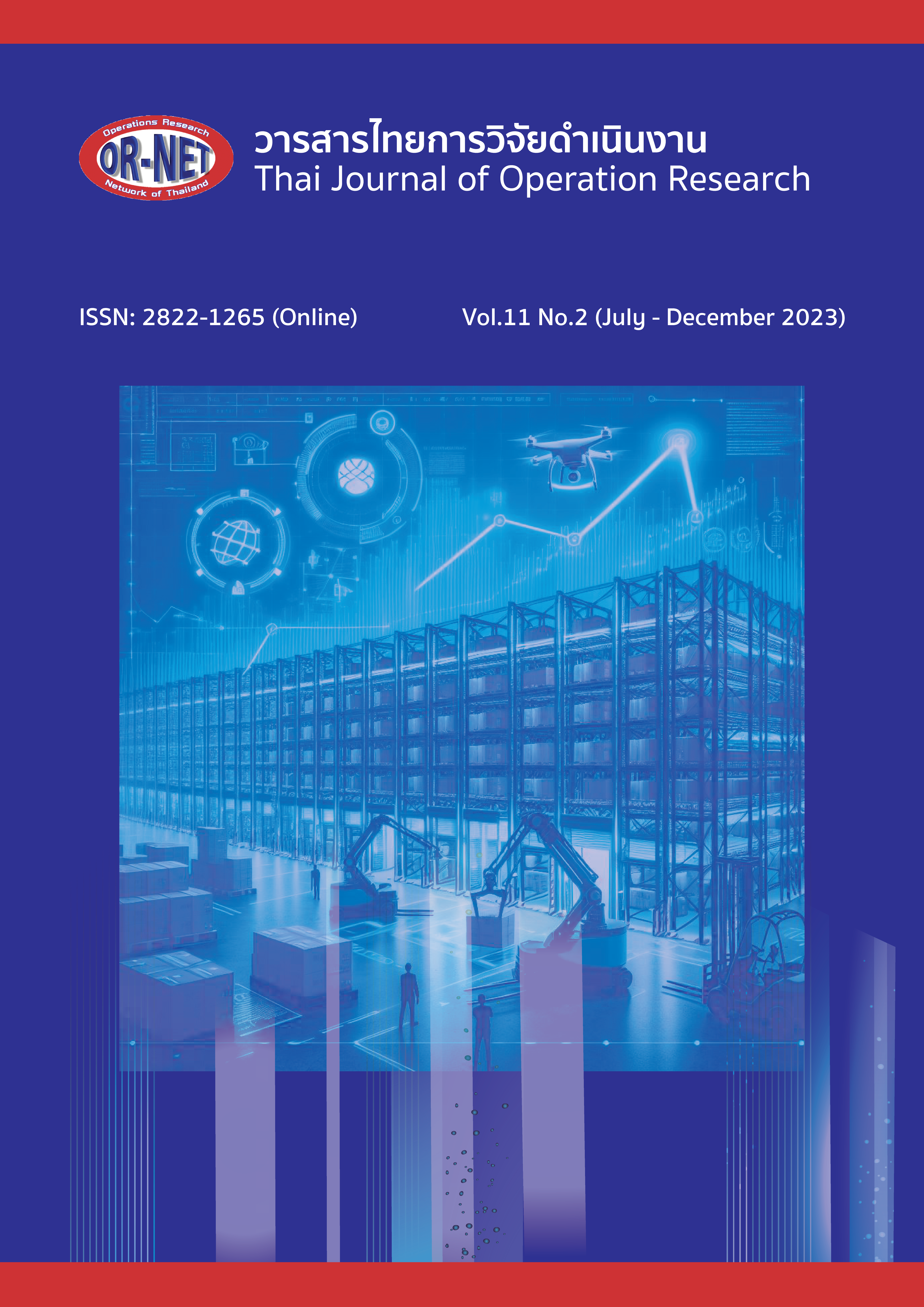Using Simulations to Reduce Waiting Time at The Outpatient Department of Laem Chabang Hospital
Keywords:
simulation, queueing theory, reduce waiting time, hospitalAbstract
This article has created a simulation model of the outpatient department at Laem Chabang Hospital in Chonburi Province in order to reduce waiting times for patients. The analysis using the model revealed that the bottleneck process in the department is the Clinic Rooms 1, 2, and 3, with average waiting times of 74.53±0.85 minutes, 75.77±0.83 minutes, and 75.79±1.15 minutes, respectively. Therefore, the article proposes 11 improvement scenarios, where Scenarios 1 to 4 involve individual improvements, and Scenarios 1 to 4 are combined to create Scenarios 5 to 11. The analysis results indicate that the recommended scenario is Scenario 11, which involves adding one doctor to the Clinic Rooms, adding one OP29 medication preparation staff, and adjusting the patient entry rate by allowing patients with yellow cards to enter until 12:00 PM and scheduling patients with blue cards from 1:00 PM onwards. By implementing these changes, it is possible to reduce the average waiting time for patients with blue cards from 127.24±1.00 minutes to 27.98±0.69 minutes, for patients with pink cards from 13.64±0.87 minutes to 13.61±0.82 minutes, for patients with white cards from 75.16±2.36 minutes to 70.95±1.87 minutes, and for patients with yellow cards from 163.48±1.54 minutes to 71.32±0.82 minutes.
References
J. Banks, J. S. Carson II, B. L. Nelson and D. M. Nicol, Discrete-Event System Simulation, 4th ed., Pearson Prentice Hall, 2015.
W. D. Kelton, R. P. Sadowski, and N. B. Zupick, Simulation with Arena, 6th ed., McGraw Hill, 2015.
จุฑา พิชิตลำเค็ญ, พื้นฐานการจำลองสถานการณ์เชิงสุ่มเพื่อการประยุกต์ใช้กับปัญหาจริง, พิมพ์ครั้งที่ 1, สำนักพิมพ์มหาวิทยาลัยเกษตรศาสตร์, 2558.
เชฎฐา ชำนาญหล่อ, กูลสัมพันธ์ สุขสานต์ และ จริสตา สายบุญณะ, “การจำลองสถานการณ์เพื่อเพิ่มประสิทธิภาพการให้บริการของผู้ป่วยนอก โรงพยาบาลแหลมฉบัง,” วารสารวิศวกรรมศาสตร์ มหาวิทยาลัยศรีนครินทรวิโรฒ., ปีที่ 13, ฉบับที่ 1, น. 166-175, 2561.
พูนธนะ ศรีสระคู, และ กฤต จันทรสมัย, “การจำลองสถานการณ์เพื่อเพิ่มประสิทธิภาพการ ให้บริการ ของคลินิกอายุรกรรม อาคารผู้ป่วยนอกโรงพยาบาลมหาสารคาม,” วิศวกรรมสารเกษมบัณฑิต., ปีที่ 9, ฉบับที่ 3, น. 184-200, 2562.
วัชรีวรรณ จันทร์เจริญกิจ, ปริญญา เสงี่ยมสุนทร, บุปผชาติ จันทร์สว่าง, จีราพร ไทยถานันดร์ และ ธิดาพร ศุภภากร, “การจำลองระบบแถวคอยสำหรับสำหรับผู้ป่วยนอก กรณีศึกษาคลินิกเบาหวาน แผนกผู้ป่วยนอกโรงพยาบาลสมเด็จพระพุทธเลิศหล้า,” วารสารวิทยาศาสตร์และเทคโนโลยี., ปีที่ 26, ฉบับที่ 1, น. 71-79, 2561.
สุเมธา ศรีละคร, และ สมบัติ สินธุเชาวน์, “การประยุกต์ใช้ทฤษฎีแถวคอยและการจำลองแบบปัญหา เพื่อลดเวลารอคอยในการรับบริการของผู้ป่วยนอกของโรงพยาบาลวารินชำราบ,” ใน การประชุมวิชาการข่ายงานวิศวกรรมอุตสาหการ ประจำปี พ.ศ. 2560, เชียงใหม่, 2560.
พรพิมล ชัยวุฒิศักดิ์, วริยา ยังไว, วีรชัย มีสัตย์ และ ศุภวิชญ์ สมเกียรติวีระ, “การจำลองระบบแถวคอยเพื่อเพิ่มประสิทธิภาพการให้บริการแผนกผู้ป่วยนอก กรณีศึกษาโรงพยาบาลเมืองปาน จังหวัดลำปาง,” วารสารวิทยาศาสตร์ลาดกระบัง., ปีที่ 29, ฉบับที่ 1, น. 10-22, 2563.
J. Boesel, B. L. Nelson and S.-H. Kim, “Using ranking and selection to clean up after simulation optimization,” Operations Research., vol. 51, no. 5, pp. 814–825, 2003.
Downloads
Published
How to Cite
Issue
Section
License

This work is licensed under a Creative Commons Attribution-NonCommercial-NoDerivatives 4.0 International License.




